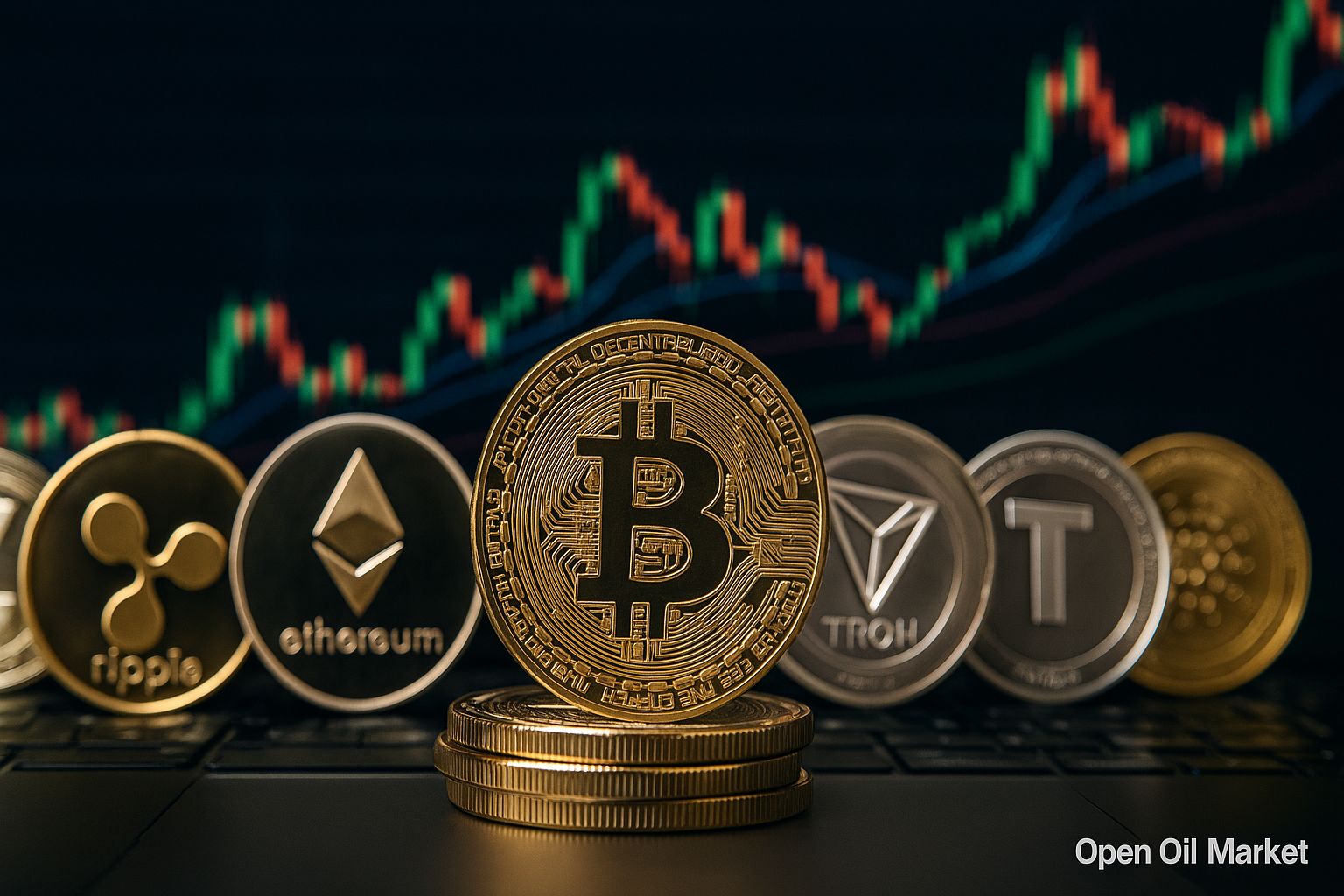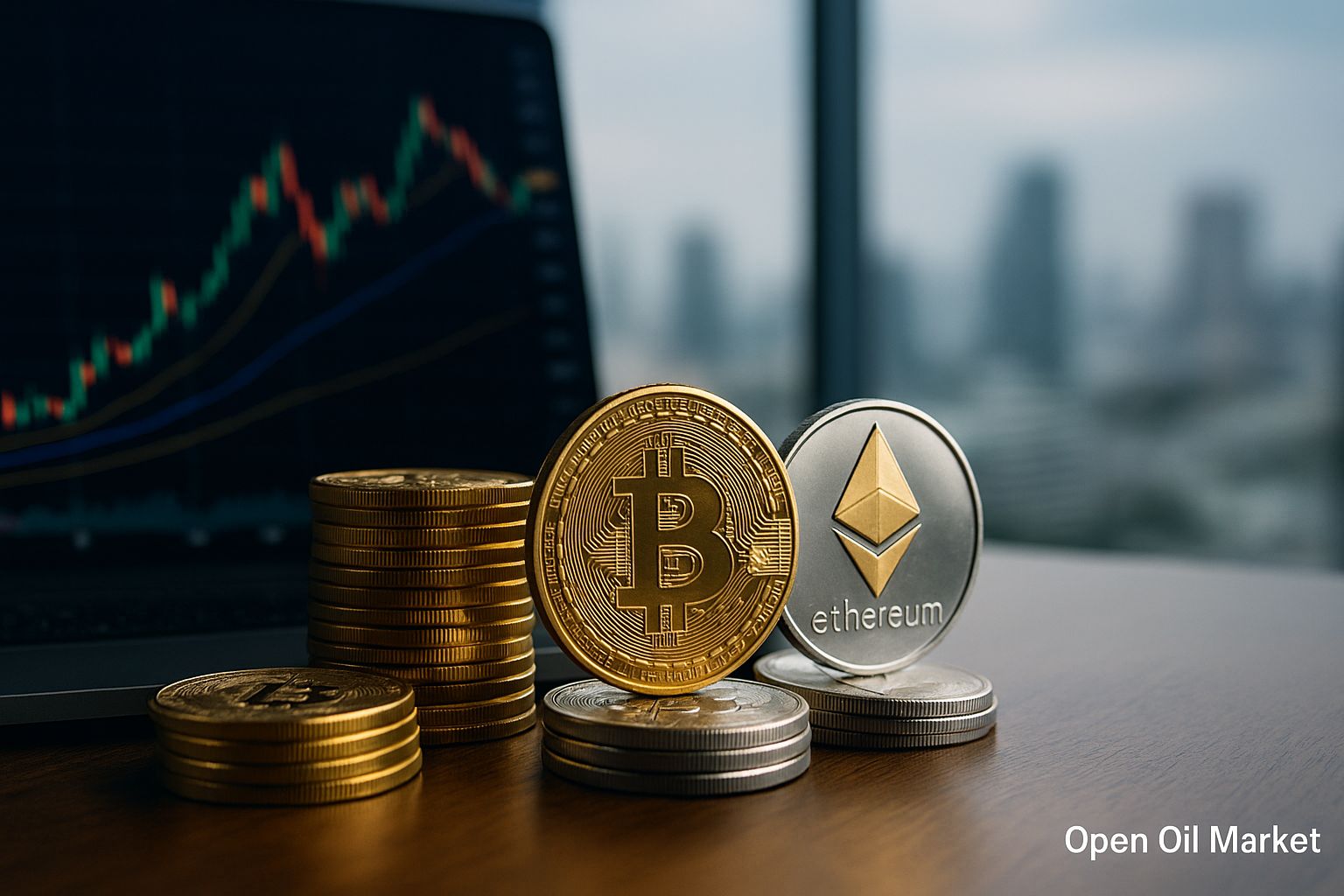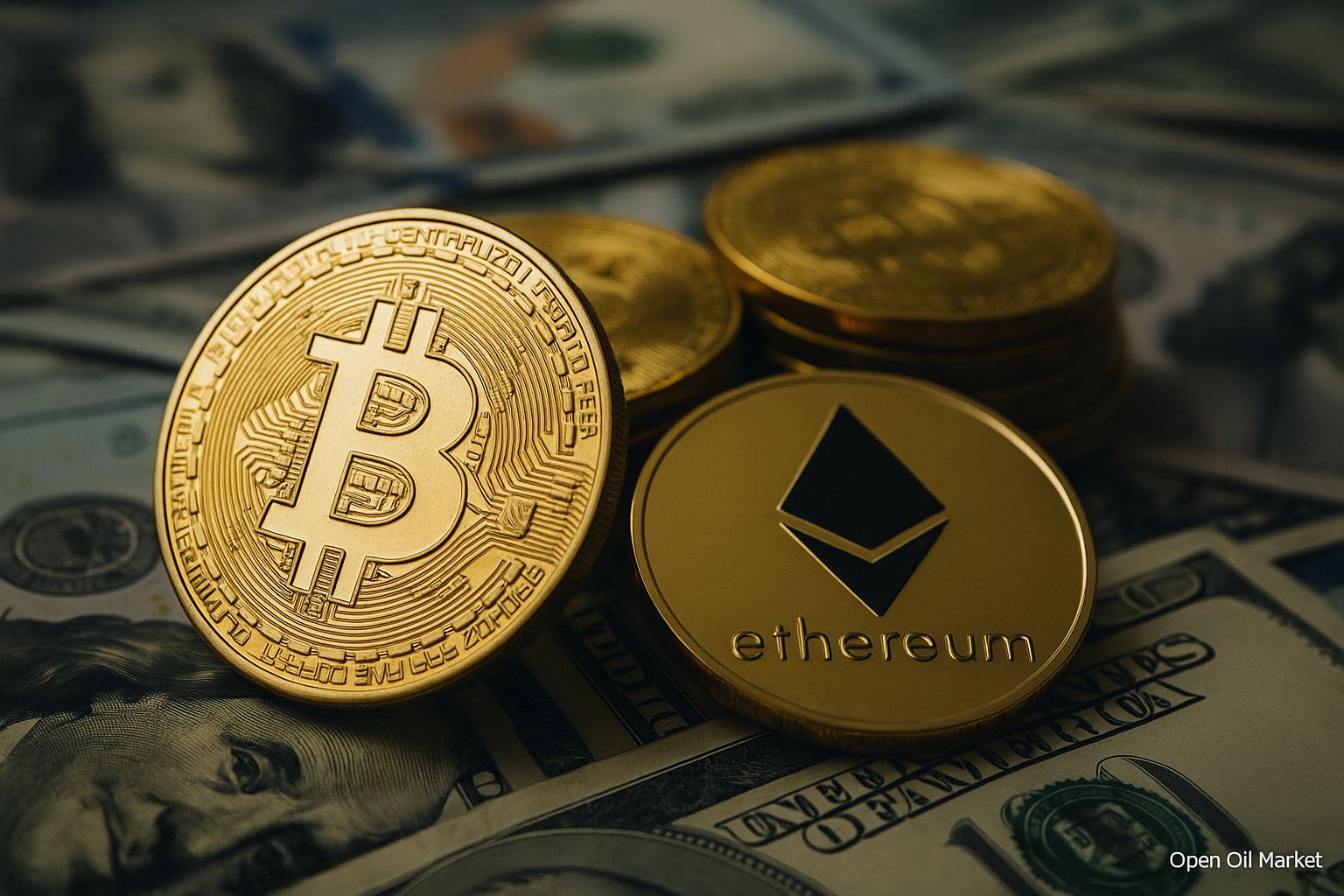
Current Cryptocurrency News as of November 19, 2025: Bitcoin Decline, Altcoin Volatility, Regulatory Changes, Top 10 Cryptocurrency Overview, and Investor Expectations.
The cryptocurrency market is exhibiting heightened volatility as mid-November 2025 approaches. The price of Bitcoin has fallen below the $90,000 mark, reaching a seven-month low after a record peak exceeding $125,000 in early October. This current decline has negated Bitcoin's growth since the beginning of the year. Market participants are divided: some analysts deem this a "last opportunity" to acquire Bitcoin at a relatively low price before a new surge, while others predict a further drop in price, potentially down to $75,000.
Amidst the Bitcoin correction, altcoins are showing mixed dynamics. Several previously surging coins are experiencing pullbacks, while promising projects continue to attract capital and investor attention. Concurrently, the regulatory landscape is shifting: in the U.S., regulatory bodies are reassessing priorities in the cryptocurrency sector, while new rules and initiatives for the digital asset market are being prepared in other countries.
The Market Under Pressure: Bitcoin and Volatility
Following an impressive rally in the first half of autumn, Bitcoin faced a significant correction. On October 6, the flagship cryptocurrency reached an all-time high of around $126,000, but soon after, a wave of sell-offs and margin position liquidations occurred. October witnessed the largest-ever closure of such positions, totaling approximately $19 billion, exacerbating the market's decline. By mid-November, Bitcoin dropped to ~$90,000, breaking this level for the first time since April 2025. Volatility remains high: sharp price fluctuations remind investors of the inherent risks of cryptocurrencies, intensifying cautious sentiment in the market.
Ethereum and Major Altcoins
The second-largest cryptocurrency by market capitalization, Ethereum (ETH), also underwent a correction alongside the market. Early November saw Ethereum lose over 10% in value within a week, dropping to approximately $3,000. However, the fundamental factors for Ethereum remain positive: the network is actively utilized in decentralized finance (DeFi) and NFTs, an ecosystem of layer-2 solutions for scalability is developing, and recent protocol updates have helped lower transaction fees. Investors will continue to monitor upcoming technical upgrades expected at the end of the year, which may enhance network efficiency.
Among other major cryptocurrencies, various trends are emerging. Ripple's token XRP gained momentum in November from the launch of the first spot exchange-traded fund (ETF) on XRP, lifting the coin's price to levels above $2.4. The Solana (SOL) platform continued to strengthen its position through an influx of institutional capital: in recent weeks, SOL-based funds have raised over $2 billion, contributing to Solana's price increase to ~$150.
Conversely, some altcoins have experienced sharp spikes and retreats – for instance, the privacy token Zcash (ZEC) surged in price in the fall on halving expectations, then underwent a significant correction. Overall, altcoins remain unpredictable: after periods of rally, deep corrections are possible; however, projects with strong fundamental stories continue to attract investor interest.
Institutional Investors and Funds
Institutional investors' activity in the crypto sphere in November is sending mixed signals. On one hand, capital inflows from major players earlier this year propelled market growth and led to the emergence of new investment products, such as spot crypto ETFs. On the other hand, recent data revealed record outflows from Bitcoin ETF funds: in one week of November, investors withdrew over $1.2 billion, indicating profit-taking and short-term caution. Nonetheless, the interest in digital assets from institutions remains robust, with new exchange-traded products in cryptocurrencies continuing to launch across various jurisdictions, and major financial companies developing infrastructure for working with digital assets.
Cryptocurrency Regulation: New Priorities
The regulatory environment for cryptocurrencies is undergoing significant changes as we approach the end of 2025. Around the world, authorities are reassessing their approaches to monitoring and integrating digital assets into the financial system.
- U.S.: The Securities and Exchange Commission (SEC), in its supervisory priorities for 2026, has excluded crypto assets as a separate category for the first time, shifting focus to monitoring artificial intelligence technologies and automated investment tools. This may signal a relative easing of regulatory pressure on the U.S. crypto market or its inclusion under general financial oversight.
- Europe: The EU's MiCA law comes into effect, introducing uniform rules for cryptocurrency companies and investor protection across all EU markets. Crypto firms must obtain licenses and comply with capital and transparency requirements, expected to enhance industry credibility and investor safety.
- Asia: Financial hubs in the region exhibit growing interest in cryptocurrencies. For instance, Hong Kong has legalized retail trading of major crypto assets through licensed exchanges in a bid to attract crypto business. Simultaneously, mainland China maintains strict restrictions. Other countries in Asia and the Middle East (such as the UAE) are implementing favorable regimes for blockchain projects, seeking to become industry hubs.
- Emerging Markets: Several nations are developing national crypto strategies. Azerbaijan, for example, is preparing a comprehensive legislative framework for regulating crypto assets by the end of 2025, including taxation and oversight. Such moves reflect a global trend towards enhancing governmental control over digital finances.
Macroeconomic Factors
External macroeconomic conditions continue to significantly impact the dynamics of the cryptocurrency market. In recent weeks, uncertainty around U.S. monetary policy has weighed on risk assets: many doubt that the Federal Reserve will lower interest rates soon, dampening interest in cryptocurrencies. Concurrently, news regarding financial policy influences short-term trends: a temporary resolution to the U.S. budget crisis (avoiding a "shutdown") in early November sparked a wave of optimism, temporarily boosting the prices of Bitcoin and Ethereum. Overall, a growing correlation between cryptocurrencies and traditional markets is evident: inflation expectations, employment indicators, and investor sentiment in equity markets increasingly reflect on digital assets.
Top 10 Most Popular Cryptocurrencies
Below is a brief overview of the ten most popular cryptocurrencies as of November 2025:
- Bitcoin (BTC): the largest cryptocurrency (around $90,000); it determines the market direction, and its limited supply secures its status as "digital gold" for investors.
- Ethereum (ETH): the second-largest digital asset and a fundamental platform for smart contracts, DeFi, and NFTs; trading around $3,000. Ethereum continues to evolve through updates that improve network scalability and reduce fees.
- Tether (USDT): the leading stablecoin pegged to the U.S. dollar 1:1. USDT is widely used in the market for trading and hedging against volatility risks, ensuring high liquidity.
- Binance Coin (BNB): the token of the largest crypto exchange, Binance, and the BNB Chain. BNB is used to pay fees and in smart contracts within the Binance ecosystem; it ranks in the top five, reflecting the exchange's influence.
- XRP (Ripple): Ripple’s cryptocurrency for fast international payments. XRP strengthened in 2025 following a court victory against the SEC and the launch of a spot ETF; the token remains vital for banking blockchain solutions.
- Solana (SOL): a high-speed blockchain competing with Ethereum due to its fast and inexpensive transactions. In 2025, SOL attracted significant investments, raising its token price to ~$150 and bolstering its project ecosystem.
- Cardano (ADA): a smart contract platform evolving through a research-driven approach. ADA steadily remains top 10 due to its active community and focus on network security and scalability.
- Dogecoin (DOGE): the most well-known "meme" cryptocurrency that began as a joke. DOGE remains among the market leaders due to massive community support and sporadic media attention, though its price is highly volatile.
- Tron (TRX): a blockchain platform with low fees, originally aimed at entertainment content. TRX is in demand for moving stablecoins (like USDT) due to its fast transactions and an actively evolving DeFi ecosystem.
- USD Coin (USDC): the second-largest stablecoin from Circle, fully backed by U.S. dollar reserves. USDC is popular among institutional investors as a reliable tool for settlements and capital storage.
Outlook and Expectations
The cryptocurrency market is faced with the question of whether the current correction will evolve into a new upward rally or whether a prolonged period of heightened volatility will ensue. The end of the year may bring increased activity in the market; however, much will depend on external factors—ranging from regulatory decisions to overarching macroeconomic trends. Investors are closely monitoring the developments: a sustained strengthening of cryptocurrencies will require a combination of a favorable macro environment, continued institutional capital inflows, and high industry trust. For now, the market displays cautious optimism interspersed with caution, reflecting a balance between the potential for further growth and the lingering risks.




